Page 5 of 6
Posted: Mon Jul 09, 2007 10:06 am
by Manystones
All from 1m x 1m pit, except the Lion (middle second in from the right) and the "mask" (second in from the right top row) which were surface finds in the same general area (i.e. my back yard).

These were the items verified to be worked by two top geologists.
http://homepage.ntlworld.com/richard.wi ... ool_01.htm
http://homepage.ntlworld.com/richard.wi ... ool_06.htm
http://homepage.ntlworld.com/richard.wi ... ird_01.htm
without microscopes to the ready they were not prepared to comment on the "mask" mentioned earlier
Posted: Mon Jul 09, 2007 11:29 am
by Charlie Hatchett
Congrats, Richard.
Seems you're making much progress proving human agency!!

I've found geologists much more open-minded about this stuff. They're not all wrapped up in anthropological theory, just rocks.
Anything new on your dating efforts?
Dating
Posted: Mon Jul 09, 2007 1:56 pm
by Manystones
I've gone back to the guy that refused to do TL dating on the basis that his colleagues thought the items shown in photos were not man-made and told him about the recent confirmation of my conclusions. However, I've got this feeling he's pressed the "Ignore stupid man who thinks he has lower palaeolithic art" button. Maybe some of these people are sharing the same software.
With regard to relative dating - I've been put in touch with someone working on this site (because of the closeness in vicinity, and also adjacent to the same river - Gade).
http://www.iceage.org.uk/South%20East/H ... ml#Croxley
and hopefully arranging to see the archived museum collection from round here where I understand there are superficial similarities with my material.
I think I am a little closer to defining it stratigraphically - but it is still in the pipeline and I am in desperate need right now of an open-minded (free) geologist to come down and confirm/refute my understanding.
At the moment I am working on a new website look and feel with some falsification on exactly this issue of visual ambiguity and iconicity.
I'll be sure to keep you updated with any developments.
Posted: Mon Jul 09, 2007 3:02 pm
by AD
Hi Charlie...
For the moment I'll just comment on calcium carbonate - have my hands full right now.
Sorry I sort of snapped at you in my last posting. I was up ridiculously late after a busy day, and was getting grumpy.
Also, I should have expanded on my statement about c.c. not "invading". Sure, it can replace original material over time, and not just in rock. But limestone, a material highly favored in early image carving, IS mainly calcium carbonate (calcite) to start with, so intrusion as a detriment to determining artificiality isn't much of a factor with this rock. With limestone (mostly rather hard here, fortunately), it's a matter of distinguishing artificial markings from differential weathering; often this is difficult, sometimes not at all. (And of course the cementing material in sandstone is largely calcium carbonate. Images on the surface of sandstone - particularly when the rock is coarse-grained - are obviously degraded when the c.c. has been dissolved, and that's when photographing these effectively becomes tricky.)
...many of the pieces are so coated and intruded with carbonate that it will be hard to make an objective case for human agency.
Maybe I'm missing something, but I don't see c.c. coating of the non-limestone artifacts here. I can see the stuff on your chert stones you just showed (certainly not a show stopper in all cases), and am wondering if the ground there is high PH (alkaline). I don't really know, but am thinking this might be a factor. The soil (clay) in this area is generally lightly but not seriously acidic, or so I've been told.
More on the other matters and comments later...
Regards, Alan
Posted: Mon Jul 09, 2007 3:31 pm
by Charlie Hatchett
AD wrote:Hi Charlie...
For the moment I'll just comment on calcium carbonate - have my hands full right now.
Sorry I sort of snapped at you in my last posting. I was up ridiculously late after a busy day, and was getting grumpy.
Also, I should have expanded on my statement about c.c. not "invading". Sure, it can replace original material over time, and not just in rock. But limestone, a material highly favored in early image carving, IS mainly calcium carbonate (calcite) to start with, so intrusion as a detriment to determining artificiality isn't much of a factor with this rock. With limestone (mostly rather hard here, fortunately), it's a matter of distinguishing artificial markings from differential weathering; often this is difficult, sometimes not at all. (And of course the cementing material in sandstone is largely calcium carbonate. Images on the surface of sandstone - particularly when the rock is coarse-grained - are obviously degraded when the c.c. has been dissolved, and that's when photographing these effectively becomes tricky.)
...many of the pieces are so coated and intruded with carbonate that it will be hard to make an objective case for human agency.
Maybe I'm missing something, but I don't see c.c. coating of the non-limestone artifacts here. I can see the stuff on your chert stones you just showed (certainly not a show stopper in all cases), and am wondering if the ground there is high PH (alkaline). I don't really know, but am thinking this might be a factor. The soil (clay) in this area is generally lightly but not seriously acidic, or so I've been told.
More on the other matters and comments later...
Regards, Alan
Hey Alan.
Sorry if I offended you. That wasn't my intent at all. I
do think
a lot of your stuff is worked, but some of it may have been even clearer before time took it's toll on the pieces. I think some of the pieces may have been hardstone at one time. For example:
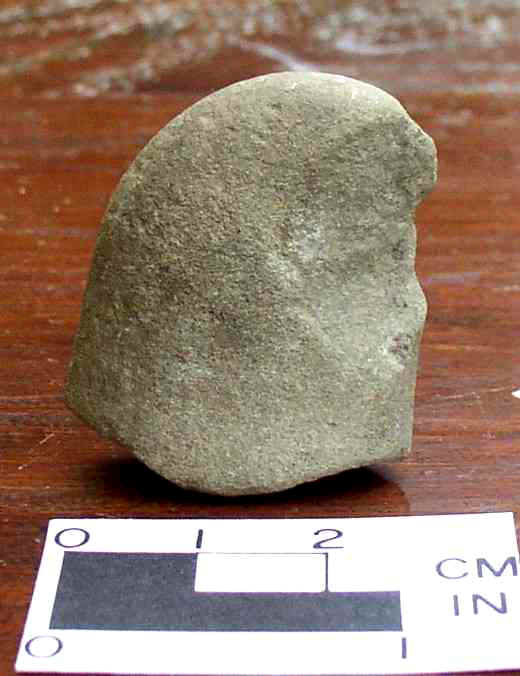
Of course I don't have the piece to observe physically, but there appears to be secondary coating of carbonate on the piece above.
Other examples that look as if the may have been hardstone at one time:
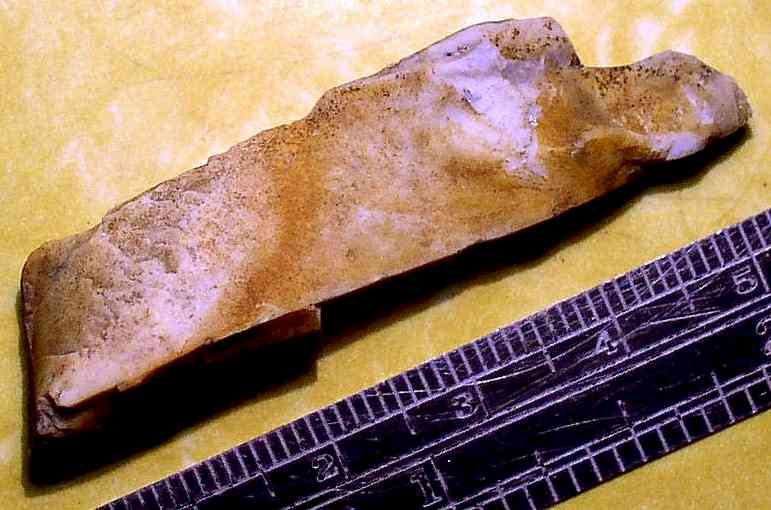
____________________________________________________
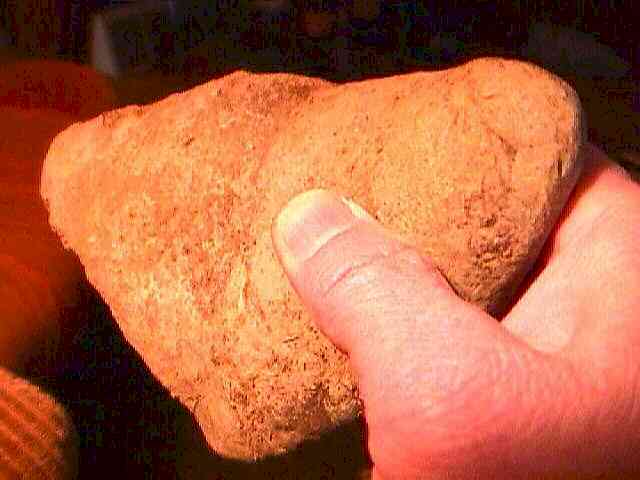
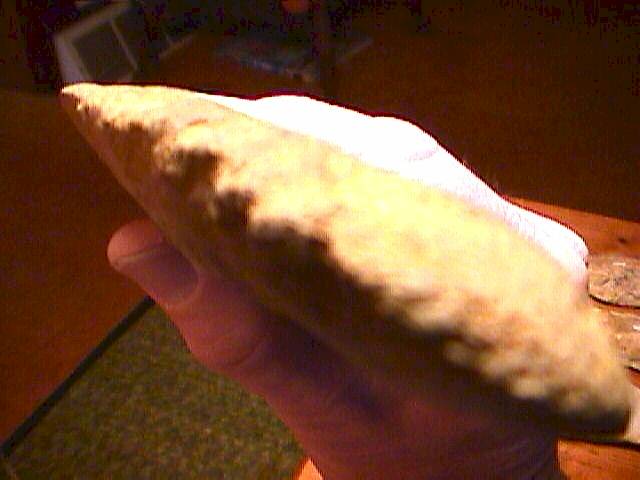
____________________________________________________
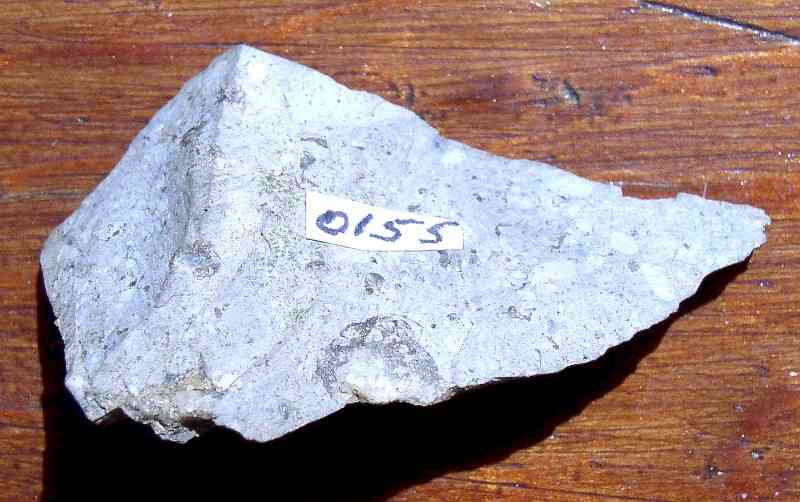
____________________________________________________
I've observed this hypothesized phenomena in central Texas:


Note what appears to be percussion waves on the ventral side of the piece above.
_________________________________________________________

Note the flake channels on the piece to the very left.
_____________________________________________________
 http://cayman.globat.com/~bandstexas.co ... al%201.jpg
http://cayman.globat.com/~bandstexas.co ... al%201.jpg
 http://cayman.globat.com/~bandstexas.co ... al%202.jpg
http://cayman.globat.com/~bandstexas.co ... al%202.jpg
 http://cayman.globat.com/~bandstexas.co ... al%203.jpg
http://cayman.globat.com/~bandstexas.co ... al%203.jpg
Note what appear to be knapping marks to the right on the proximal end (second photo) and on the distal end (third image)
Cheers,
Posted: Mon Jul 09, 2007 5:57 pm
by AD
Hi Charlie...
No offense taken!
Thanks for your observations on my stones that you show. (These are all early attempts at close-ups, some with an old low-res camera - a little embarrassing shown large.) The first one, as I look at it in person, has no foreign material on its surface. The light spots in the photo are an effect of the lighting.
Other examples that look as if the may have been hardstone at one time:
A question: What is the geological definition of "hardstone"?
The lithologies of the pieces are:
1. Fine-grained sandstone, a cracked and further worked piece of river pebble, not local to the site.
2. Flint, I am told Vanport imported from the Flint Ridge area - very hard for a long time, still is. (This one was verified as human-worked by several geologists.)
3., 4., 5. Limestone.
More comments later...
Regards, Alan
Posted: Mon Jul 09, 2007 6:55 pm
by Rokcet Scientist
AD wrote:
(These are all early attempts at close-ups, some with an old low-res camera - a little embarrassing shown large.)
4 megapixels is enough resolution to print 8x10" with 35mm film equivalent image quality: 300dpi.
If the photographer knows what he's doing of course.
Macro photos don't generally require liberal cropping.
Posted: Mon Jul 09, 2007 7:33 pm
by AD
Hi Rokcet Scientist...
Thanks for the observations, and also for your earlier very useful postings on photography. (I might give that high-tech diffuser a try.)
Well, when I said low-res, I did mean LOW. The earliest photos were with Sony's MVC-FD7, I think maybe their first offering, about 1998. It stored the images on a 3 1/2" floppy, and its resolution was 640x480 pixels! (I need to re-photograph a lot of material - can't do everything.)
You're right, four megapixels, using the macro function properly, does a pretty decent job. In fact, my current camera is exactly that, an Olympus C-4000. I'm fairly pleased with it, actually. (Yeah, the "if the photographer knows what he's doing" part can be problematic...) For some of this stuff that is really small, I'd like to have a good binocular microscope with enough travel to accommodate things from hairs to hand-sized rocks, and with a camera interface ($).
Thanks again.
Regards, Alan
Posted: Tue Jul 10, 2007 3:08 am
by Rokcet Scientist
AD wrote:
[...] binocular microscope with enough travel to accommodate things from hairs to hand-sized rocks [...]
The Oly 4000 is an excellent cam (I had an Oly 4040Z). Also for macro, as it has 'Super Macro mode' for photographing subjects even closer than one inch. And a 12 second selftimer that allows the tripod to finish swinging before the shutter pops. So
that cam
can cover that entire range "from hairs to hand-sized rocks". Whether you could ever find a
microscope that does the same thing is doubtful, imo. You'd probably need one with revolving optics, but, as you already suspect, finding one with the required amount of travel is going to be a problem.
But why would you? Seeing as the Oly 4000 covers all your macro requirements in a camera, all you need is a tripod, flashlight (preferably off-camera), some D-I-Y letter-sized diffusers and reflectors, and a standard setup in a corner of a room.
And you can spend the money for the microscope on other stuff . . .
BTW, what hairsized archaeological objects are you thinking of?
Posted: Tue Jul 10, 2007 4:45 am
by Charlie Hatchett
A question: What is the geological definition of "hardstone"?
Chert/ flint, quartzite, chalcedony, coral (I know, not a stone, but natives used it as such), obsidian, jasper, silcified sandstone, novaculite, petrified wood, porcellainite, etc...
Posted: Tue Jul 10, 2007 4:52 am
by Rokcet Scientist
Can coral generally be considered in the class of 'hardstone', Charlie? Or just particular types? Because afaik there also are many soft coral types, the skeletons of which have the brittle texture of sandstone or calcium.
Posted: Tue Jul 10, 2007 4:57 am
by Charlie Hatchett
Rokcet Scientist wrote:Can coral generally be considered in the class of 'hardstone', Charlie? Or just particular types? Because afaik there also are many soft coral types, the skeletons of which have the brittle texture of sandstone or calcium.
What I'm thinking of is the hard types, like the following:



Posted: Tue Jul 10, 2007 5:02 am
by Rokcet Scientist
Charlie Hatchett wrote:

Wow!
Those must have cost the artisan quite some time to make. They're actually pretty!
Posted: Tue Jul 10, 2007 5:10 am
by Charlie Hatchett
Rokcet Scientist wrote:Charlie Hatchett wrote:

Wow!
Those must have cost the artisan quite some time to make. They're actually pretty!
Yeah, a member of a knapper forum took images of coral he's been recovering along with some points he made out of the material. It
is very pretty stuff!
Posted: Tue Jul 10, 2007 10:12 am
by Roberto
Geologist generally refer to both hard and solf "rock."
Hard rocks being your metamorphic and igneous rocks,
while solf rocks are your sedimentary rocks. Sedimentary
rocks are generally too brittle/solf to be useful for napping
or tool usage of course.














